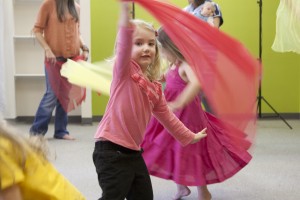When visiting the home or workspace of others, one may notice if they have music playing in the background. Others may be able to, and even prefer to, have music playing while reading or concentrating on a task, while some find it distracting. After so many years, experts are still trying to understand how our brains react to music. While there are always exceptions to the rule, most researchers conclude that listening to music has several beneficial effects on mind, body, and spirit:
The Benefits of Listening to Music
- Listening to music engages your brain – MRI scans reveal active areas of the brain lighting up when music is heard.
- Studies show that it can improve memory and slow cognitive decline – Music memory is one of the brain functions most resistant to dementia.
- Music triggers the release of several beneficial brain chemicals such as dopamine, cortisol, serotonin, and oxytocin.
- Music helps lower anxiety and the symptoms of depression.
- Its heart healthy, elevating mood and allowing blood to flow more easily
- Music helps people eat less and increases workout endurance.
Developmental Benefits of Music to Children
While many of the benefits of enjoying and listening to music continue throughout our lifetimes, there are important developmental advantages that exposure to music at an early age offers to children from as early as the womb. Establishing a strong foundation and exposure to music in children at home and in the classroom helps to develop a lifelong love. We have explored many of these developmental benefits over the years.
For children, music:
- Encourages a respect and love of nature
- Teaches children to share, take turns, and speak up
- Helps students in school
- Teaches children patience
- And much, much, more!
Considering the many advantages that a lifelong love of music provides, the key question is – How do I instill a lifelong love of music is my child? For caregivers who already have a love of music and therefore expose children to it at home, church, and the classroom, this may seem like an afterthought. For parents and caregivers who may not know where to start, here are some things that can easily be done from before birth.
Simple Ways to Instill a Lifelong Love of Music in Children
- Play music to a child in the womb – A child can begin to detect and discern noises from outside the womb at around the 23rd week of pregnancy, and scientists recommend exposing a child to both speech and music.
- Sing to the womb – As the child develops, it begins to recognize the parent’s voices, as well as that of other family members and caregivers. Singing songs to the child is a great way to create both a bond with family as well as with music. The newborn child will also recognize songs and lullabies that were repeatedly sung to the womb.
- Listen to Music with your kids – Some of us will remember from childhood that music was almost always on around the house. Music doesn’t have to be loud to create a soothing background for family dinners and house chores. It’s also a chance for families to sing along, dance, and act all around silly. Also consider exposing children to different genres of music, so that they develop a musical “vocabulary” and gain an appreciation of many different cultures and styles.
- Sing with your kids – Children’s music is more popular than ever, and many a parent will testify that some of it is quite catchy! Whether its children’s songs or mainstream, find what your kids enjoy singing, and sing along! Not only will it make them happy and strengthen your bond, but it will also help them learn to harmonize with others.
- Take them to see live music – It’s one thing to hear music, sing at home, or see music on a screen, but quite another to show children real live professionals performing music in person. Not only is the sound of live music unbeatable, the other stimuli that a live concert or music festival provides fill the senses. While it’s important to consider the who, what, when, where, and how of taking a kid to a live performance, if done with good planning, the experience should be one they will remember their entire lives.
- Enroll them in Early Childhood Music Classes – As we have stated above, there are many mental, social, and developmental benefits to music classes for children. From infancy to young adulthood, these programs help kids develop a different language and vocabulary, as well as a lifelong passion for music.
Music transcends age, culture, gender, race, and nationality. With a literal world of choices, listeners can choose music to which they can relate most, and with technology, listen to it just about anywhere on the planet. Music offers individuals a personalized outlet, and the freedom and choice that music offers can produce a love that lasts a lifetime.







